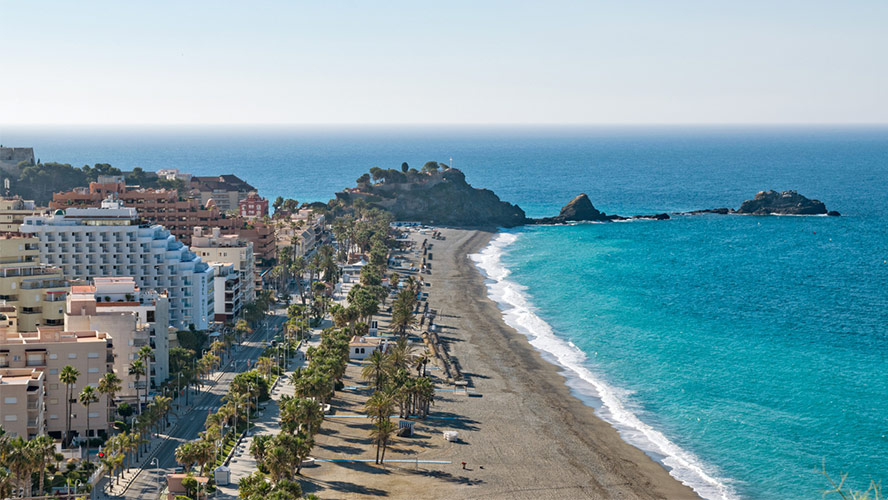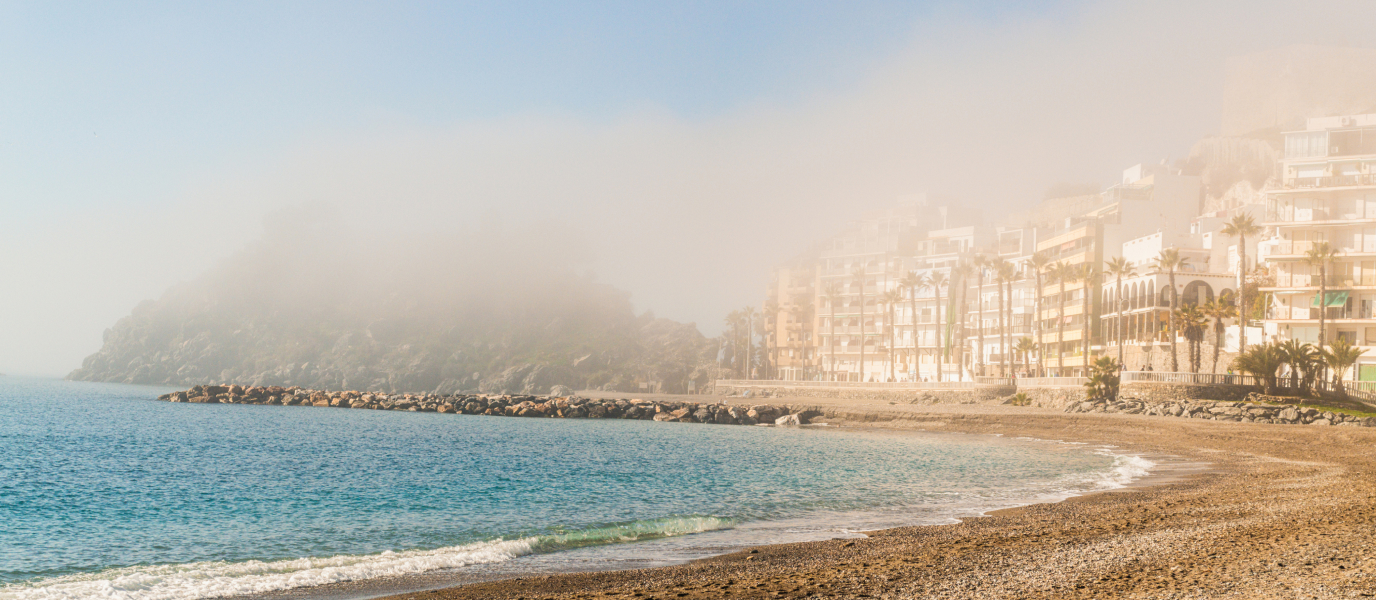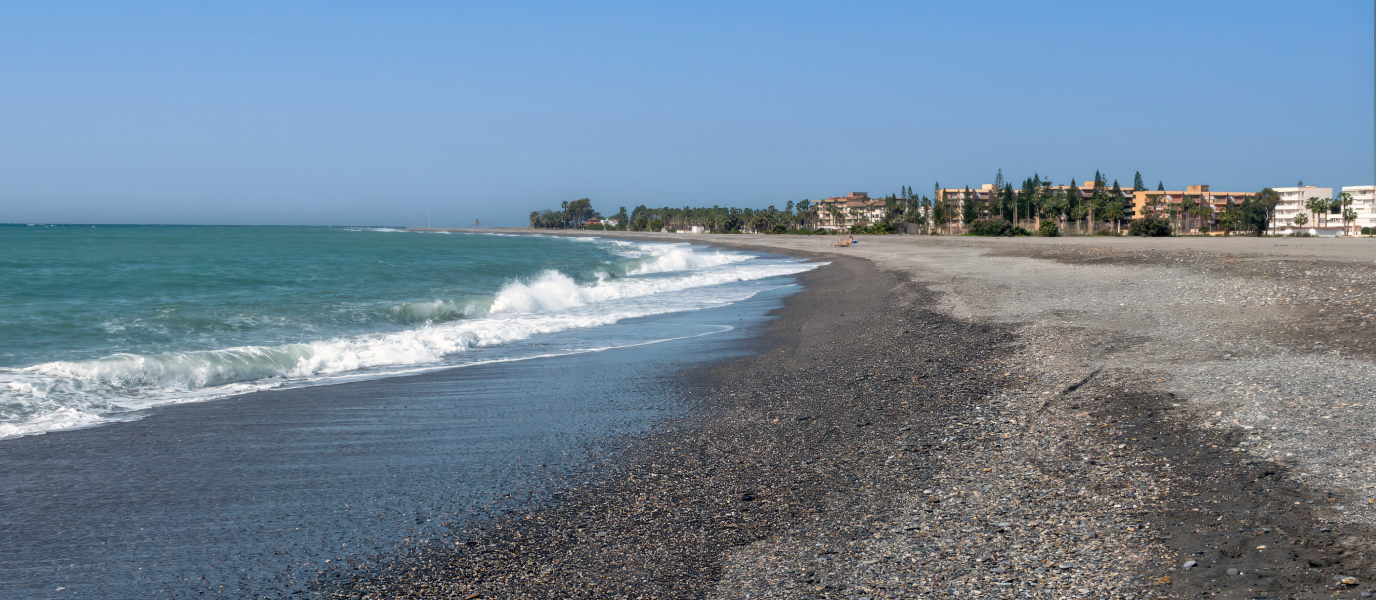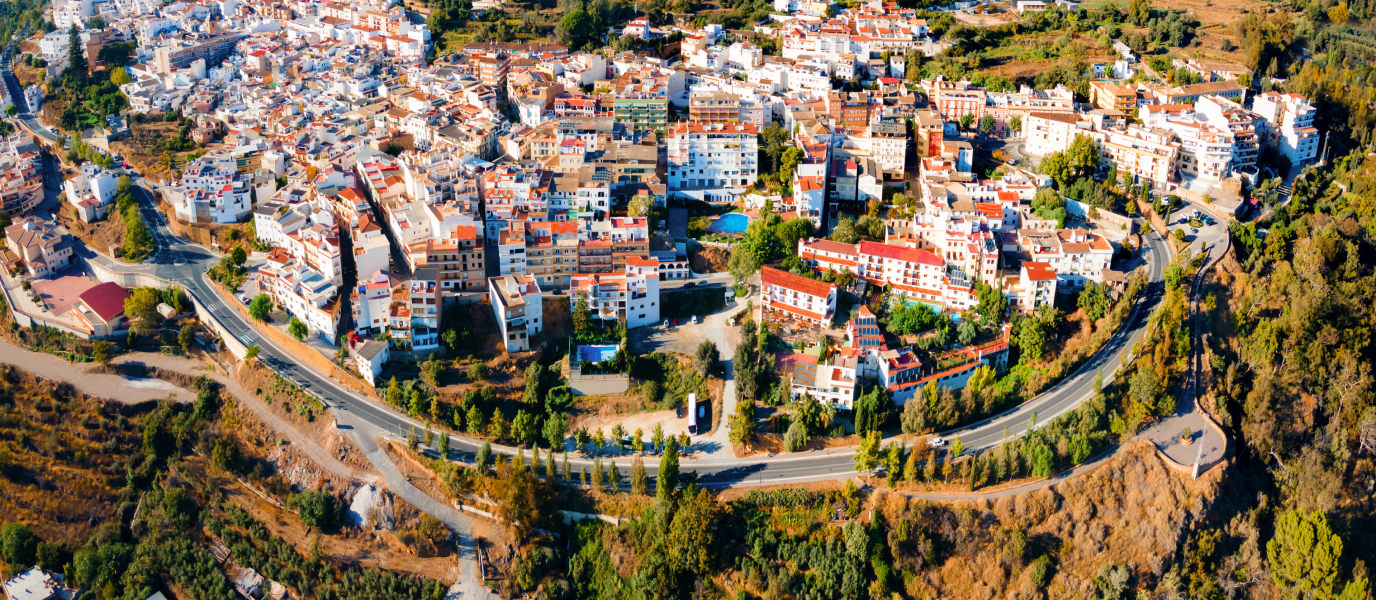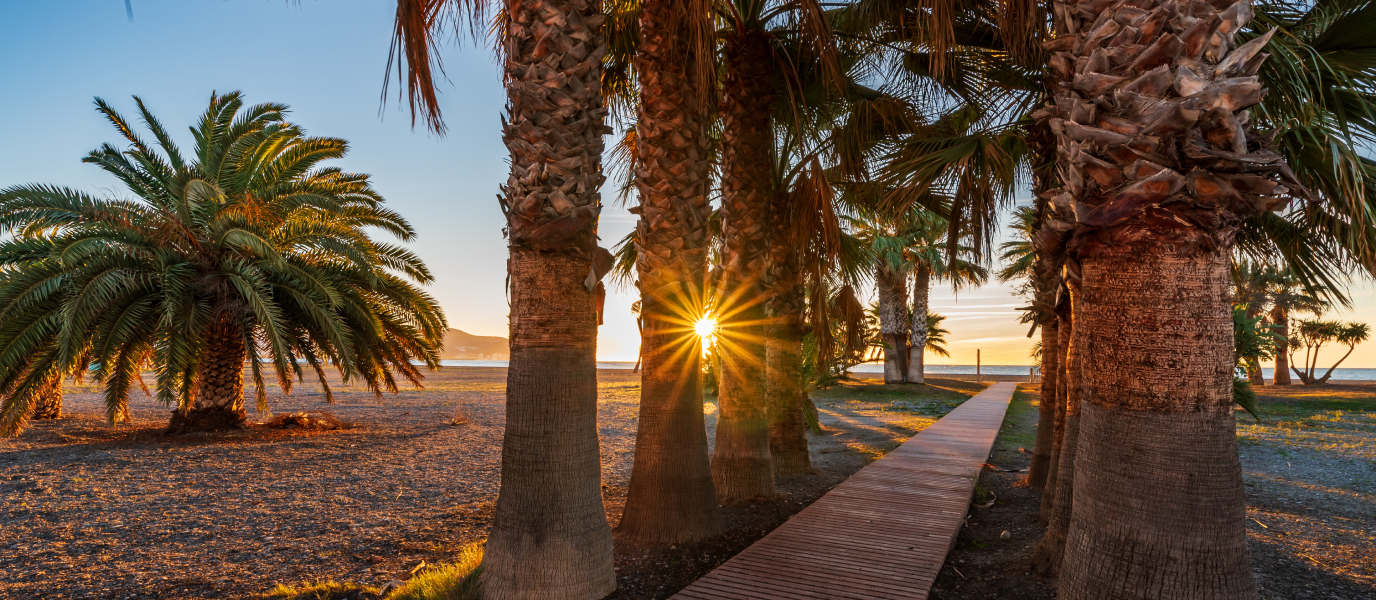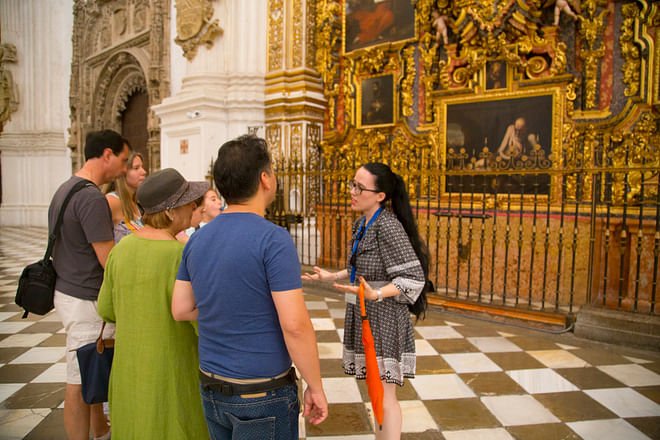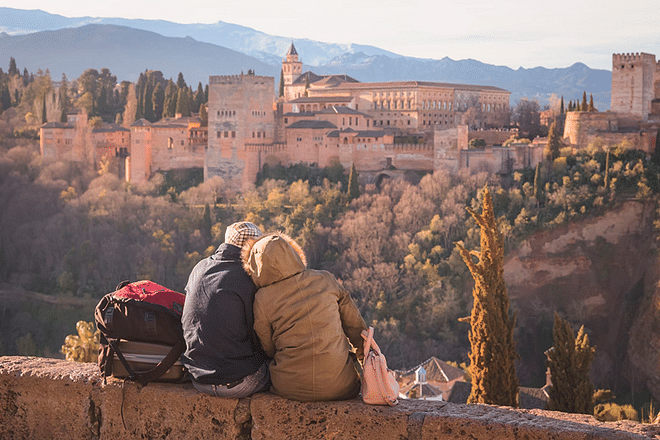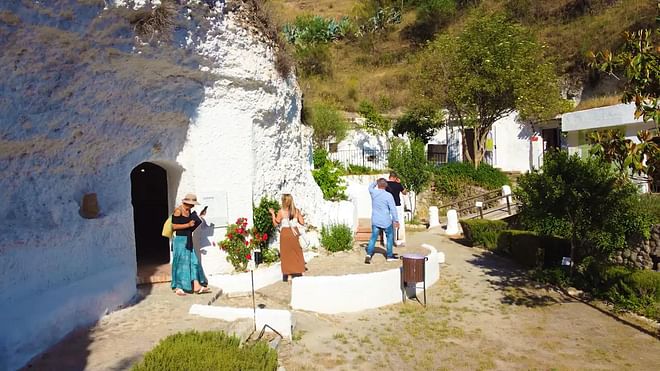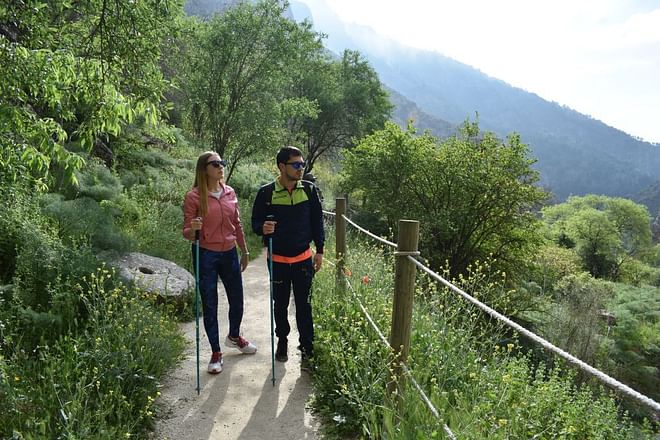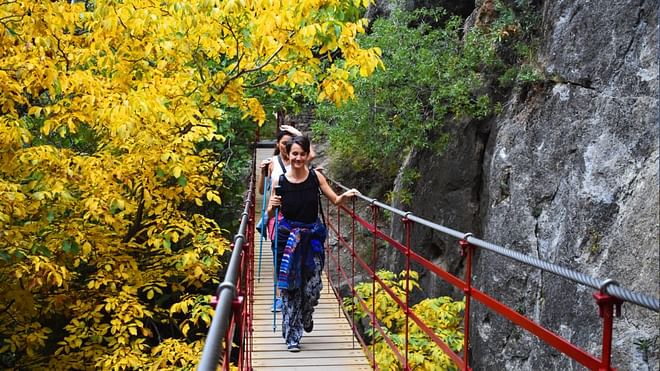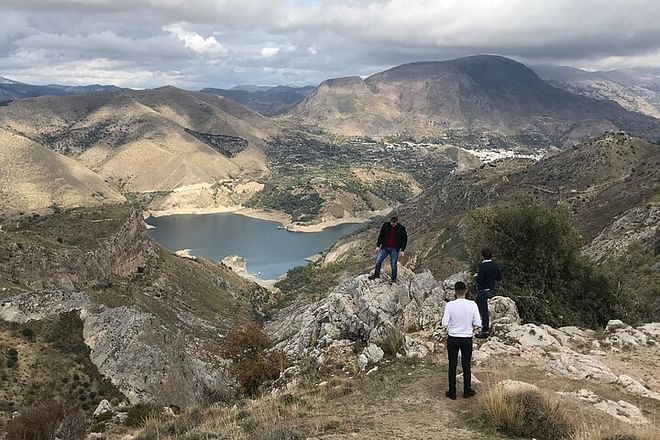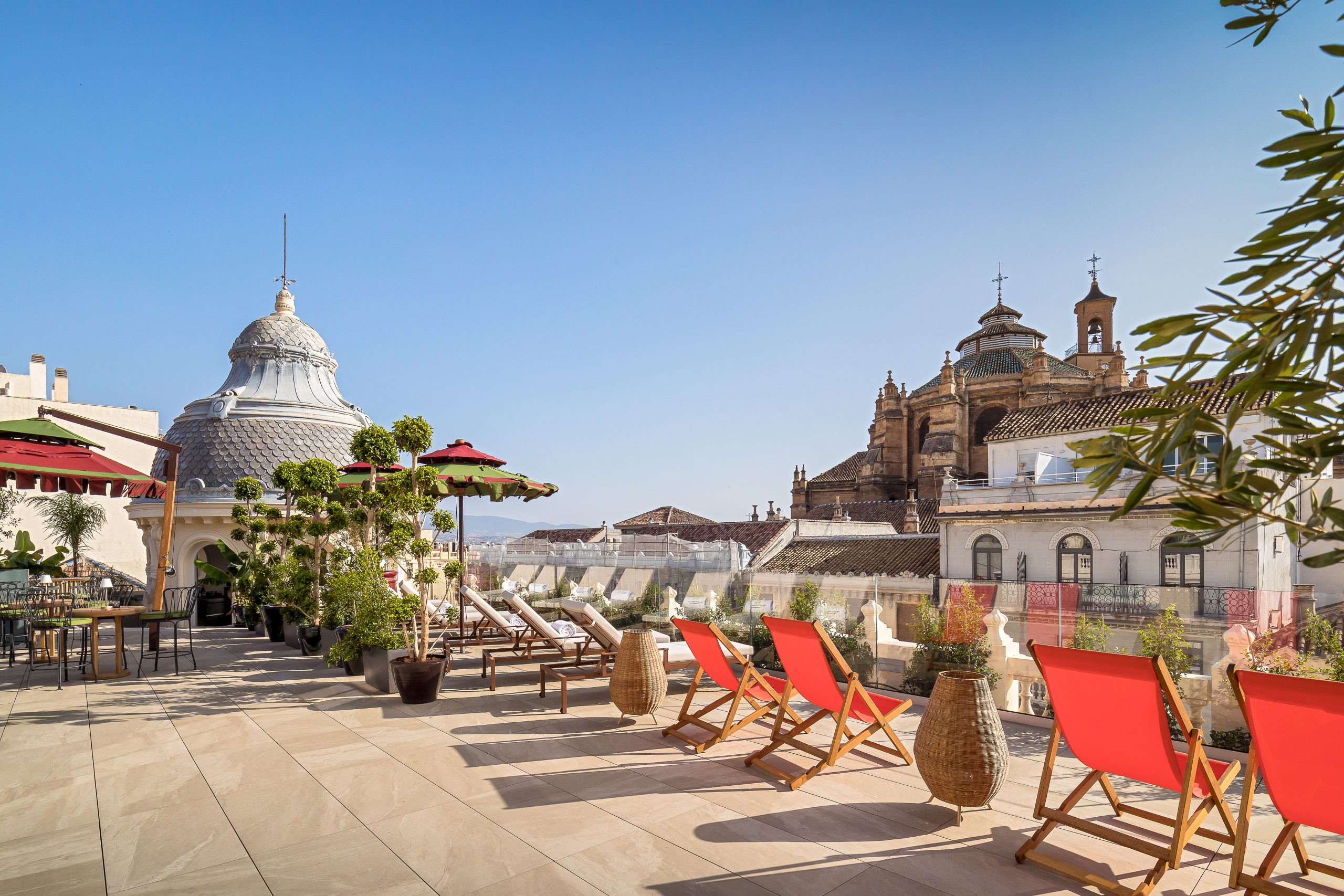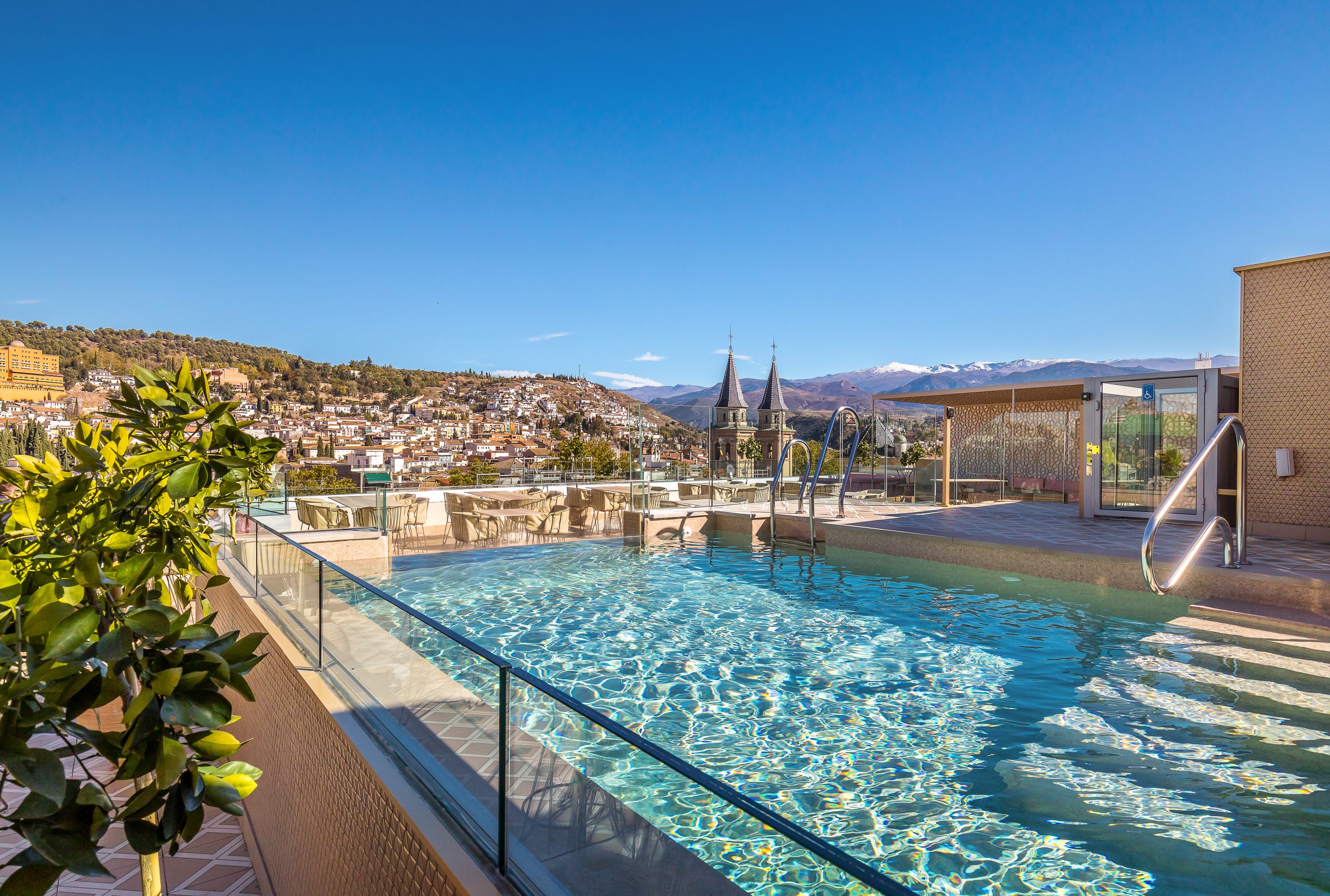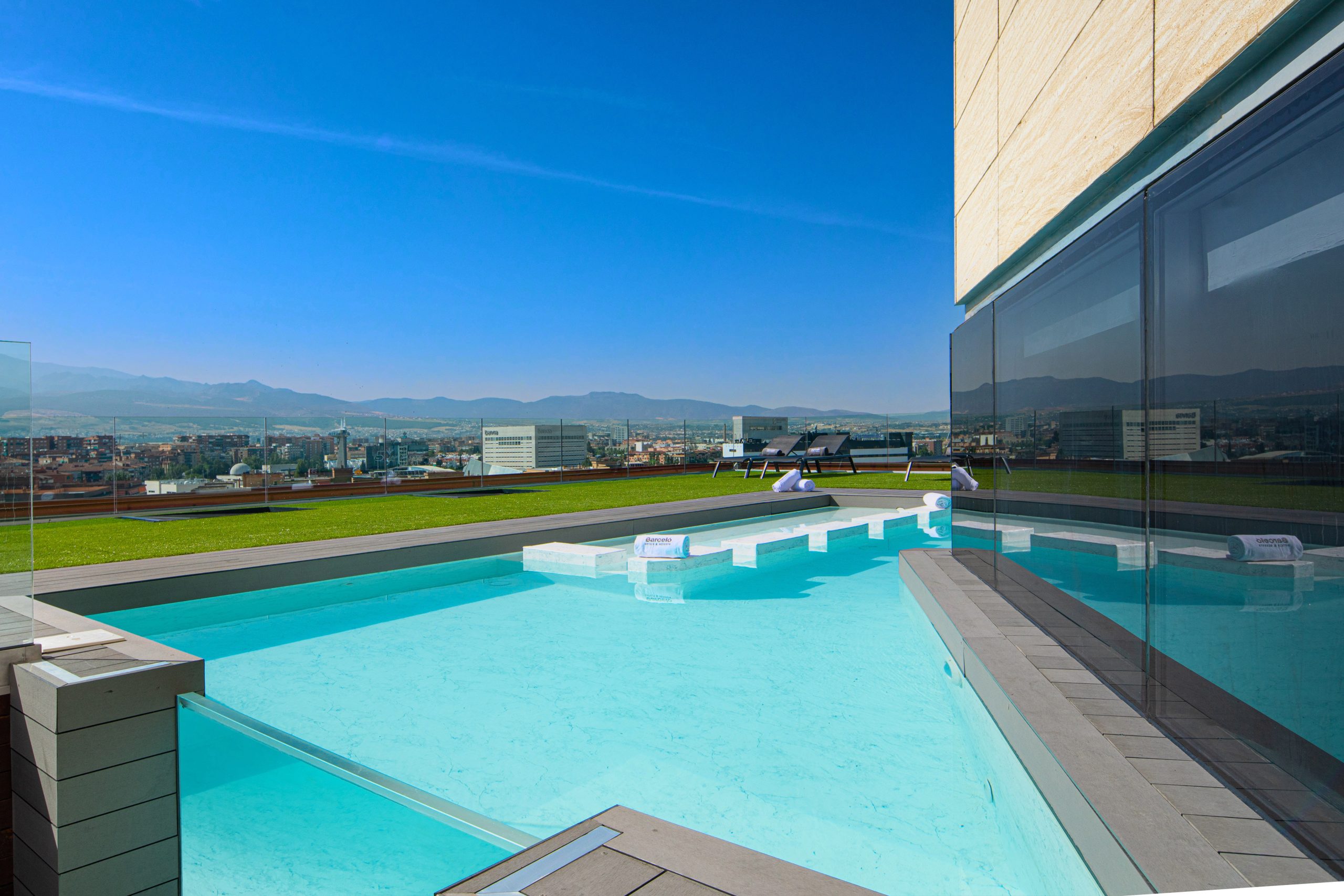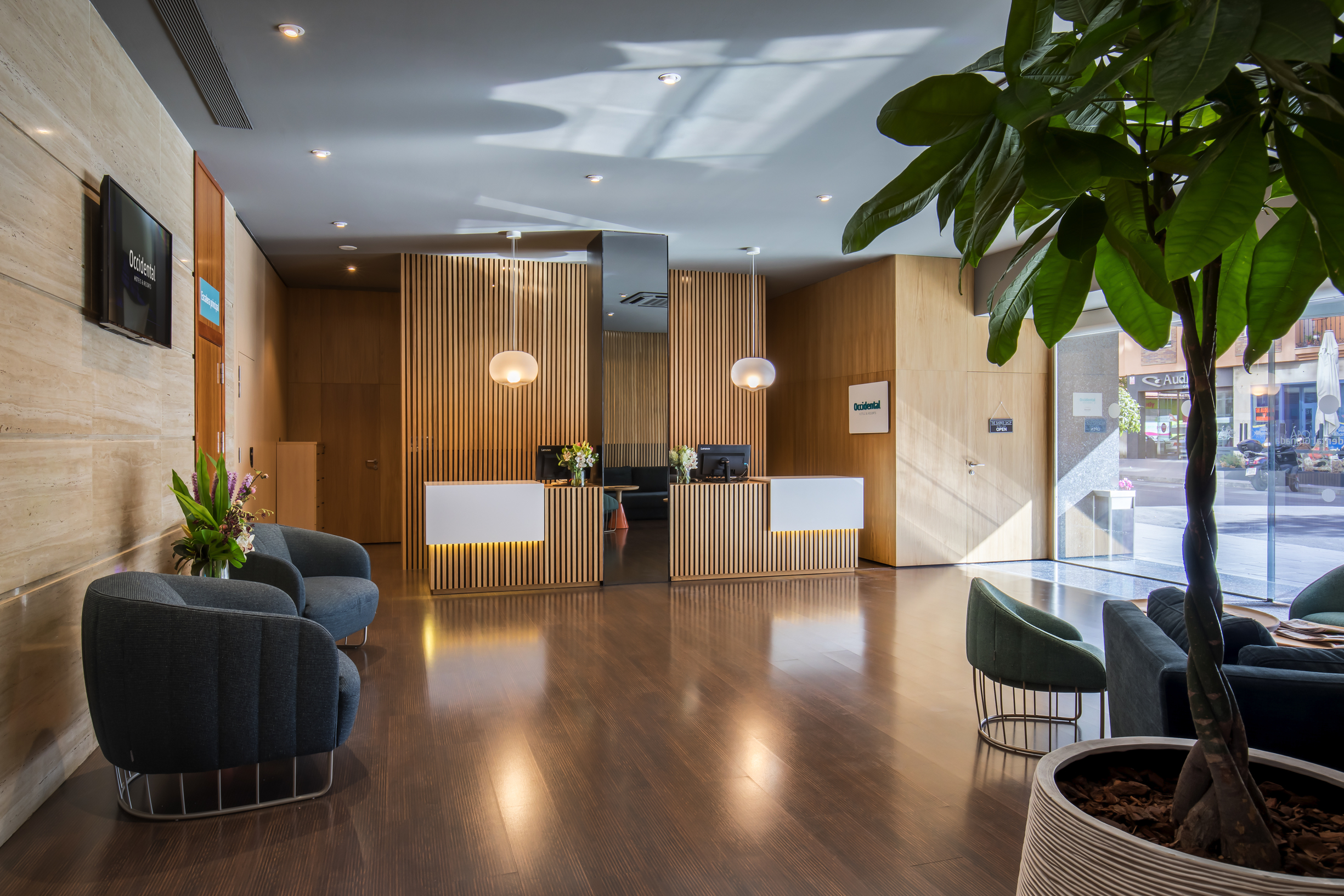Almuñécar is one of Granada’s most popular tourist towns, and for good reason. Nestled on what is known as Andalusia’s ‘Costa Tropical’, it has a large number of beaches, 26 to be exact, spread along its 19 kilometres of coastline. It also has the added attraction of good temperatures, which never fall below 16 ºC in winter or rise above 35 ºC in summer. Those who love the sea and water sports will find something close to paradise in Almuñécar, but those who prefer inland natural scenery also have a wide range of possibilities to enjoy.
The Complejo Ecológico Peña Escrita, for example, is an attractive space set on a natural balcony at an altitude of 1,100 metres, which affords good views of the foothills of the Sierra Nevada, the Alpujarras, and the area where the tropical valley meets the Mediterranean. It has an animal reserve, and is also a special place to enjoy outdoor sports such as hiking, mountain biking or paragliding.
One of Almuñécar’s most notable celebrations is that in honour of the Virgen de la Antigua, commemorating the victory of Lope de Valenzuela over the Moor Aben Aboo in 1569. It takes the form of a procession at sea at night, in which a large number of decorated vessels accompany the Virgin as far as Puerta del Mar beach. The celebration ends with a great firework display on the Peñones del Santo.
San Miguel Castle
This Arab fortress, which occupies an area once populated by Phoenicians and Romans, literally crowns the town of Almuñécar on the hill known as Cerro San Miguel. It is known that the castle was used as a retreat by the Nazari dynasty during the thirteenth century and that in the sixteenth century, towards the end of the reign of Fernando el Católico, the moat, the drawbridge, and the entrance façade with its four round turrets were built. During the War of Independence against the French, the castle was subject to fierce bombardment, and was left in ruins, although it was then used as a Christian cemetery until the mid-twentieth century. Nowadays, part of San Miguel Castle houses the Museum of the History of the Town. It affords excellent views of Almuñécar’s historic quarter, of the coast, and of the surrounding plains.
The historic quarter and monuments
Almuñécar’s historic quarter is a grand tapestry of winding streets and picturesque alleyways. The heart of the town, crowned by San Miguel Castle, lies on a hill and enjoys views of the sea. Almost all the houses in Almuñécar’s historic quarter are painted white, and many are decorated with flowers and plants. It is a very well preserved urban network, and is still home to families who have lived here for several generations.
Within Almuñécar’s historic quarter, it is worth visiting the Cueva de Siete Palacios [Cave of Seven Palaces] and the Archaeological Museum, as well as the pleasant Jardines del Majuelo, with its fine display of tropical plants — and the Roman ruins of the Fish-Salting Factory.
Almuñécar’s beaches
The beaches are one of the great attractions of this part of Granada; Almuñécar has 19 kilometres of coastline and 26 different beaches, earning it the title of Queen of the Costa Tropical. There are little coves with calm waters, such as Cabria and Calaiza, and beaches that stretch for up to a kilometre in length, such as San Cristóbal. There are also beaches with fine sand (for example, Cala Curumbico and El Tesorillo), along with two naturist beaches: Cantarriján and El Muerto. Another beach, with a fascinating sea bed, is La Herradura, which boasts significant posidonia meadows and numerous marine species, and which provides a good range of services.
